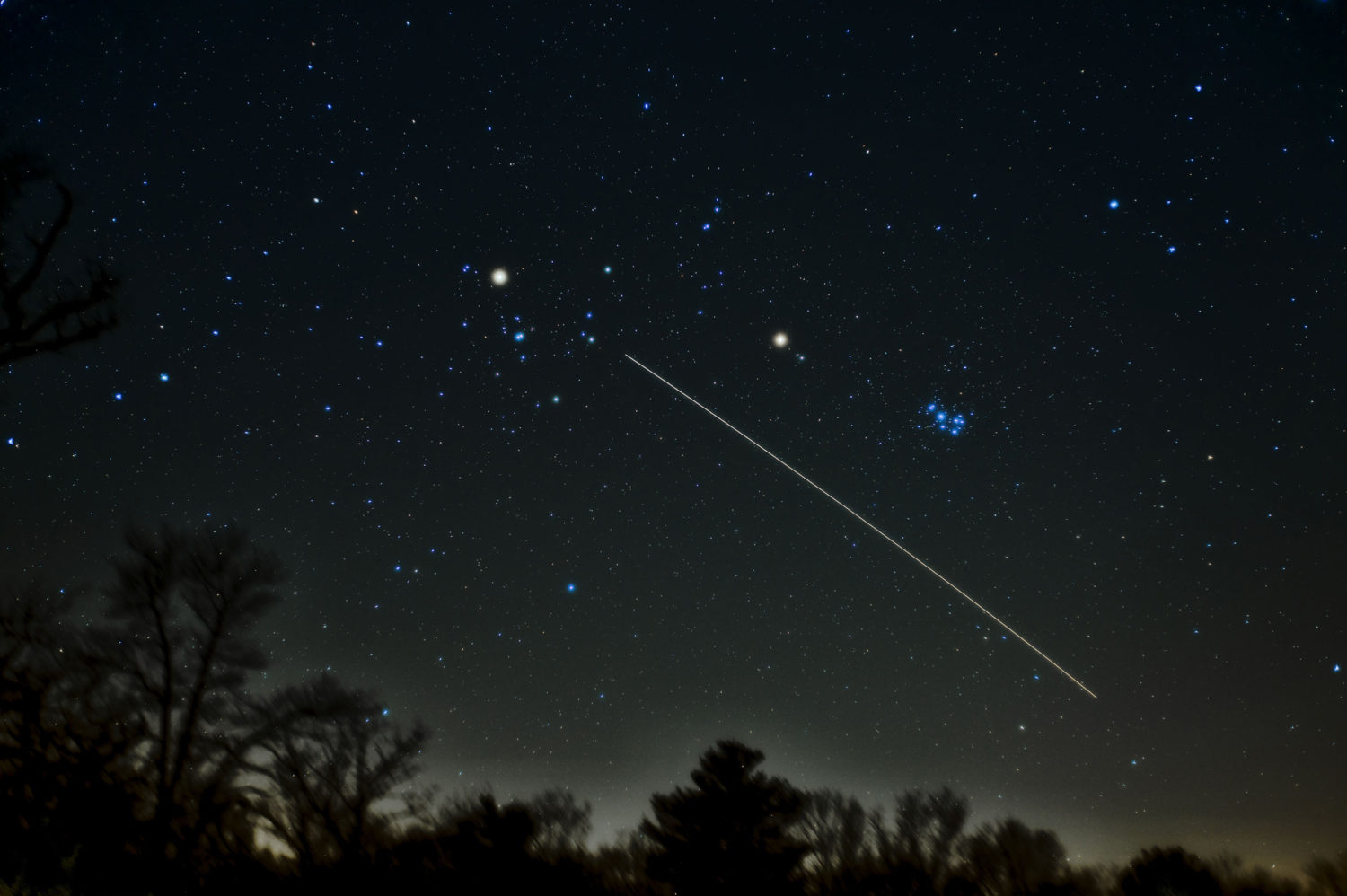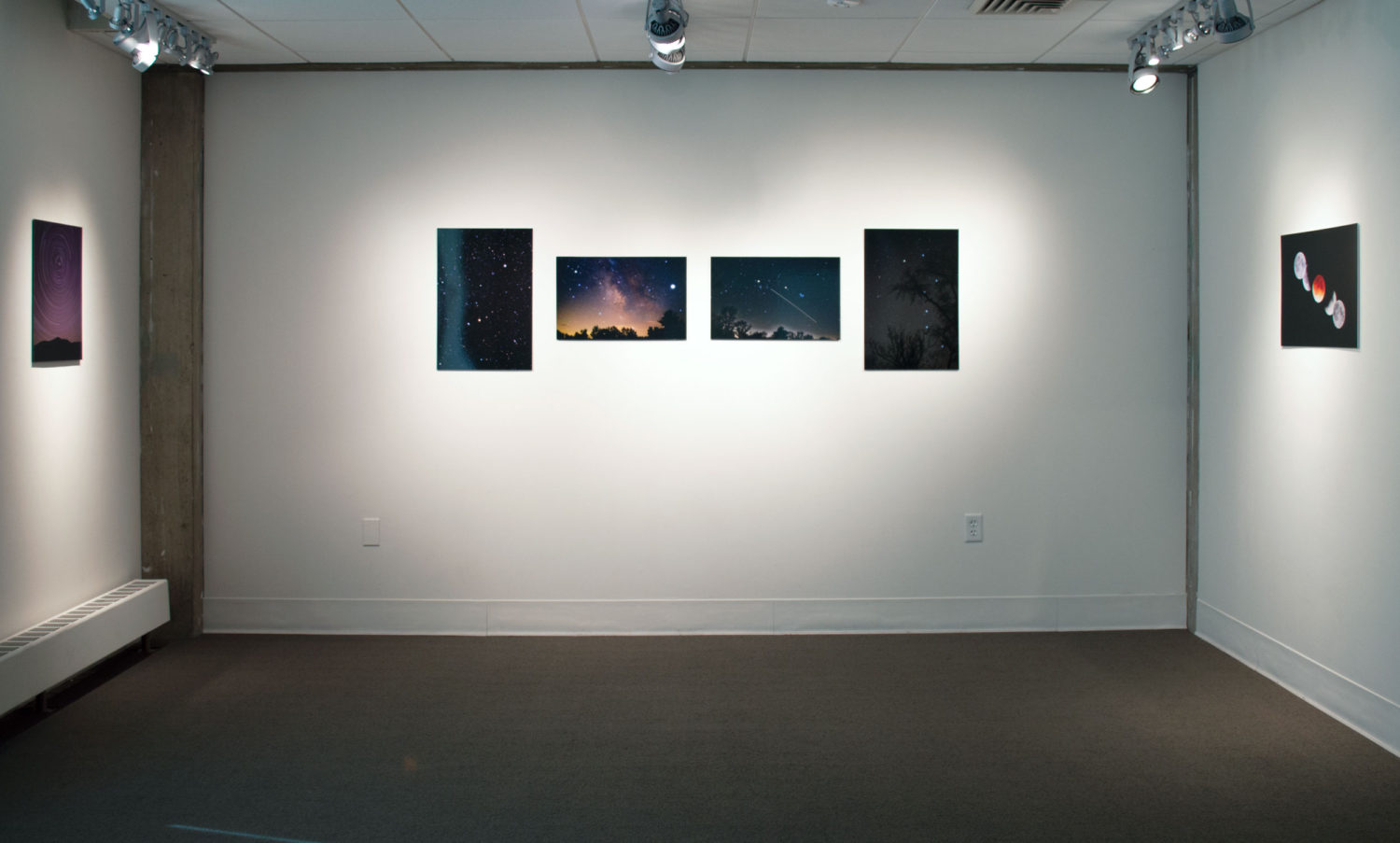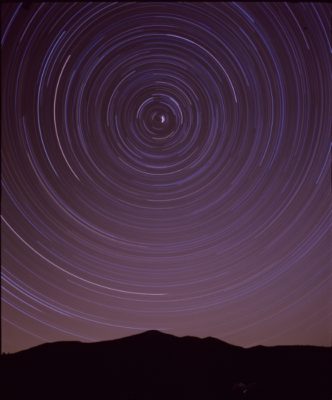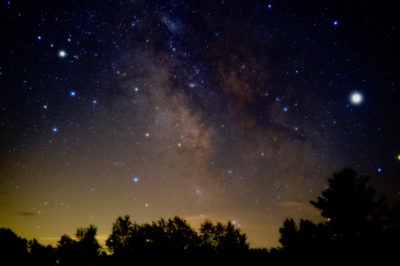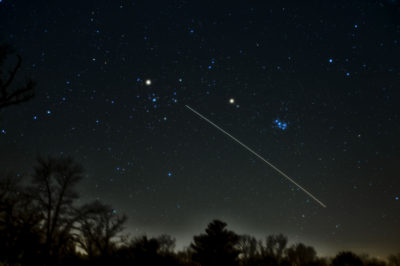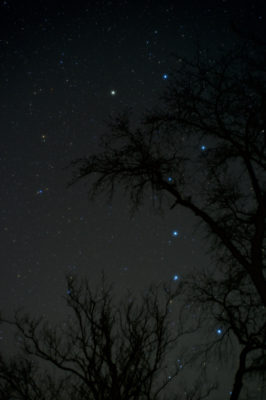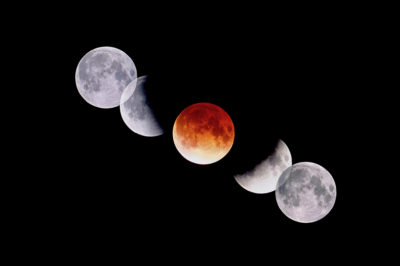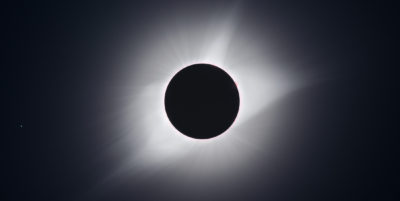Robert Horton
Artist's Intercalary Event Works
Artist's Intercalary Event Works
- The Great Star Wheel
- n.d.
- Digital print
- unknown
This six-hour exposure records the stars of the northern sky moving in circles around the celestial pole. The smallest of the arcs, very close, but not at the center of these circles, is Polaris, the North Star. Taken from the dark skies of Sandwich, New Hampshire, looking towards Mt. Whiteface.
Equipment: Nikon D5100, Nikon 300mm lens
This artwork was exhibited at the
- The Little Bear (Little Dipper)
- n.d.
- Digital print
- unknown
This two-minute exposure shows many more stars, fainter than what the eye can see. The diffusion filter accentuates the colors of the stars, while empathizing the pattern of brighter stars forming the familiar shape of the constellation. Polaris is the brightest star of this constellation, located at the end of the handle of The Little Dipper.
Equipment: Nikon Df, 50mm lens with a diffusion filter, and a star tracking platform.
This artwork was exhibited at the
- Stars and Planets
- August 2019
- Digital print
- unknown
The summer Milky Way is a beautiful sight, when viewed from rural skies, away from city lights. The brighter stars of the constellation of Sagittarius form a pattern that looks somewhat like a teapot, with the Milky Way appearing as steam rising from the spout. Embedded within the Milky Way are several star clusters and Nebulae.
This photo, taken from the White Mountains of New Hampshire, also includes two planets; Saturn is the brightest object to the left side of the photo, while Jupiter is the blazing object to the right.Equipment: Nikon Df, 50mm lens with a diffusion filter.
This artwork was exhibited at the
- Celestial Visitors
- 2019
- Digital print
- unknown
International Space Station flying by the Pleiades, Mars and into Taurus, early evening of April 6, 2019.
This photograph captures two celestial visitors in the constellation of Taurus, the Bull. The International Space Station is seen as a streak of light during the 78-second exposure, as it moved upward from the northwestern horizon. The other visitor to this starry scene is the planet Mars, the bright, ruddy colored object about half-way between the Pleiades and the bright, orange star, Aldebaran.
The use of a diffusion filter in front of the lens accentuates the various colors of the stars, and the ruddy hue of Mars. The colors of the stars are dependent on their temperatures; blue stars (such as the Pleiades) are hot, while orange stars are much cooler.
Mars has since moved away from Taurus, all the way into the constellation of Sagittarius, and is now visible in the early morning sky. However, this part of the sky will soon be host to another celestial – when brilliant Venus will be seen among the stars of the Pleiades during the early evenings of April 2nd through 4th, 2020. This will be a stunning sight in binoculars.
Equipment: Nikon Df, 50mm lens with a diffusion filter, mounted a star tracking platform.
This artwork was exhibited at the
- Big Bear Climbing a Tree (Big Dipper)
- n.d.
- Digital print
- unknown
The constellation of Ursa Major is, of course, The Big Bear. In this photograph, the constellation is positioned among the branches of an old oak tree for scale.
The familiar pattern of stars is more often referred to as The Big Dipper. Like all circumpolar constellations, The Big Dipper appears to move counter-clockwise around the North Star, and can be seen any time throughout the year, with its position in the sky changing depending on the season and time of night. The two end stars the form the spoon of the dipper are referred to as “the pointers”; an imaginary line drawn through them point towards Polaris, The North Star.
During late winter evenings, as seen here, The Big Dipper is high up in the northeast, with the handle pointing towards the horizon. By mid-April, the constellation will be at its highest point in the sky, appearing upside down, above the North Star. Later, around the time of the summer solstice, the constellation is located to the northwest, with the handle pointing upward. Finally, by early fall, The Big Dipper is at its lowest arc in the sky, just above the northern horizon.
Equipment: Nikon Df, 50mm lens.
This artwork was exhibited at the
- Total Lunar Eclipse
- November 8, 2003
- Photographic print
- unknown
This pleasing photograph of the November 8, 2003 eclipse has excellent resolution and great color. It also demonstrates the movement of the Moon across the sky. The entire sequence (from the lower right to upper left) was accomplished by taking multiple exposures, on a single frame of film.
By allowing the telescope to track at sidereal rate, the apparent movement of the sky due to the Earth’s rotation was effectively cancelled out. During the 5 1⁄2 hours needed to take this photograph, the Moon moved eastward, through the shadow of the Earth. Each image of the Moon was timed about 50 minutes apart. Thus, we have graphic proof that each hour the Moon moves its own width across the sky.
Equipment: Takahashi Sky 90 telescope, Nikon FM camera body, Fujichrome 100 film.
This artwork was exhibited at the
- Total Solar Eclipse, as seen from Fred’s Mountain, overlooking Teton National Park
- August 21, 2017
- Digital print
- unknown
The Great American Eclipse of 2017 was visible from a path crossing the entire continental United States. Anyone that has witnessed a total solar eclipse understands what a magical experience it can be. In order to depict all of the detail as it was seen visually, from the flame-like solar prominences, out to the wispy, solar corona required nine different images of varying exposures. This final composite photograph comes close to capturing that magic of witnessing a total solar eclipse.
Equipment: Nikon D5100, Nikon 300mm lens.
Individual exposures by Bob Horton. Scott MacNeill assisted with HDR compositing.
This artwork was exhibited at the



